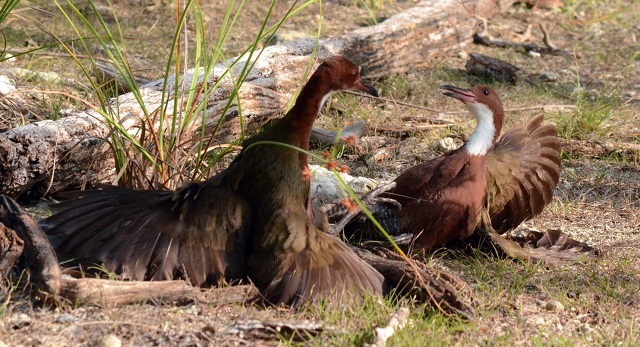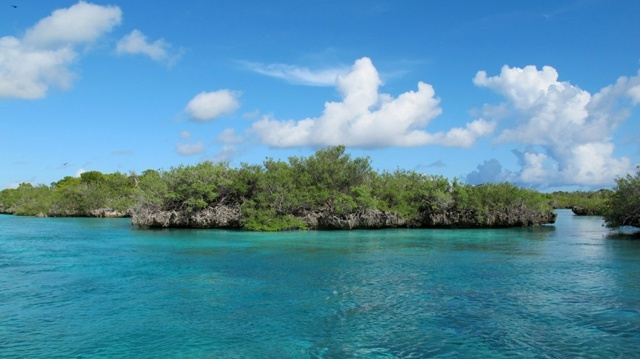4 species of the Aldabra Atoll – a UNESCO World Heritage Site in Seychelles
(Seychelles News Agency) - Aldabra Atoll is one of two sites in Seychelles designated as World Heritage sites by the United Nations Educational, Scientific and Cultural Organisation (UNESCO). The second is the Vallee de Mai Forest on Praslin Island. These are protected for their cultural and natural importance and outstanding universal value.
Designated by UNESCO in 1982, Aldabra stands out not only due to its size – one of the largest atolls in the world, but also due to its rich, diverse, and unique biodiversity, home to over 400 endemic species and subspecies, including vertebrates, invertebrates, and plants.
SNA presents four species, some endemic, found on Aldabra in the Seychelles archipelago in the western Indian Ocean.
Dugong
Dugongs and their sirenian relatives, including manatees - sometimes called sea cows - are gentle creatures that survive solely on a diet of seagrass. They were hunted and slaughtered by early settlers and sailors to the islands for their meat and oil. Aldabra is the habitat for the only known remaining population of dugongs in the Seychelles. Classified as vulnerable on the IUCN Red List, dugongs in East Africa are thought to be highly threatened.
Sightings of one or two animals were recorded as far back as 1970, but it was only recently that a more comprehensive survey of the dugong population was attempted by the Seychelles Island Foundation (SIF), which manages the atoll. The partial aerial survey of the lagoon recorded a minimum of 14 dugongs in the area covered, which is by far the largest number counted to date and suggests that the population may be larger.
 |
| (SIF) Photo License: All Rights Reserved |
The Aldabra banded snail
Rhachistia aldabrae – the Aldabra banded snail with its distinctively-hued purple shell intersected with bands of bright pink, was declared extinct in 2007. The last living individual of this Aldabra endemic species was recorded in 1997. Subsequent searches yielded only shell remains. The snail's apparent demise was linked to declining rainfall on Aldabra and was widely publicised internationally as one of the first casualties of climate change impacts.
The Aldabra banded snail has been recorded historically from the islands of Picard, Malabar, Polymnie, Esprit, and Grande Terre but very little is known about its ecology. The tiny snail was re-discovered on Malabar Island in August 2014, giving scientists hope that nature may be more resilient than originally thought. This rediscovery provides an incredible second chance to protect and study this species in the wild and ensure that it is not lost again.
 |
| (Catherina Onezia/SIF) Photo License: All Rights Reserved |
The Aldabra white-throated rail
The white-throated rail (Dryolimnas Cuvier) or Cuvier's rail is a species of bird in the family Rallidae. It is found in Comoros, Madagascar, Mayotte, and Seychelles. In Seychelles, the bird is found only on Aldabra and is considered to be one of the fastest examples of the evolution of loss of flight in birds to be documented.
A research paper published on the white-throated rail has shown that through evolution, the species has lost its ability to fly. The paper recommended that the white-throated rail is considered an evolutionary distinct species, not a subspecies as previously thought.
 |
| (SIF) Photo License: All Rights Reserved |
The black Aldabra drongo
Endemic to Aldabra, the black Aldabra drongo (Dicrurus aldabranus), with its red eyes and distinctive forked tail, is one of only two endemic bird species found on the atoll. The drongo is relatively common and found on all four of the atoll's islands.
The drongo can be seen in all types of habitats in the terrestrial environment and feeds on small insects and vertebrates plus bird's eggs and even seabird chicks. The Aldabra drongo is included in the long-term Aldabra land bird monitoring programme, and data suggests that the population is currently stable.
 |
| (mags49, Wikicommons) Photo License: CC BY-SA 4.0 |






